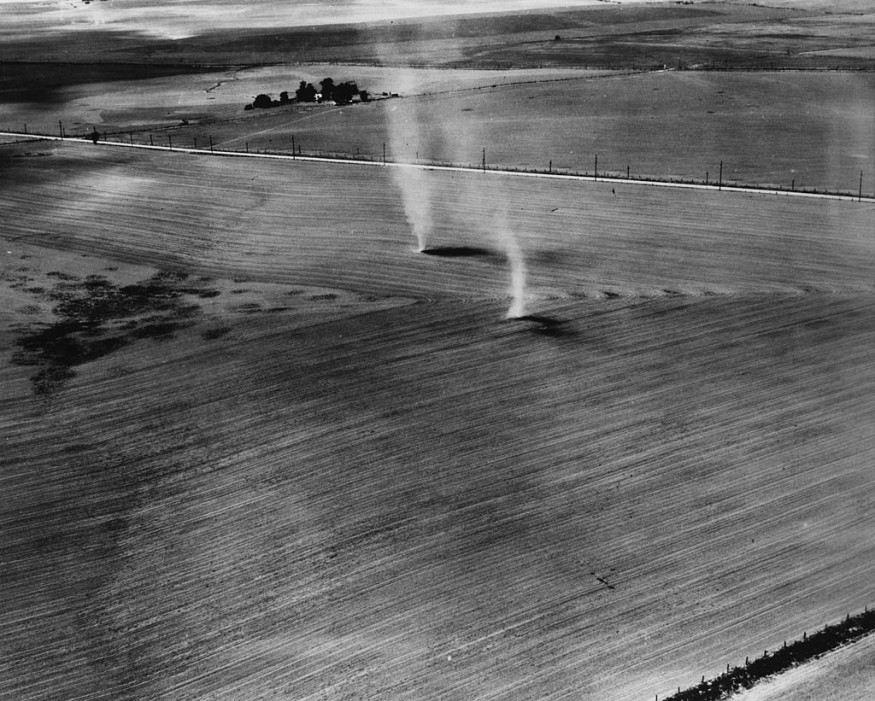Presently, the Earth is facing the possibility of extreme erosion of soil, although this time, the danger is intensified by climate change.
Together, they develop an unprecedented dual threat to the supply of food, as well as the planet's health, and farmers can be main partners in the prevention of disastrous consequences.
Both climate change and erosion can be controlled by integrating more carbon into the soil. Essentially, photosynthetic carbon fixation eliminates carbon dioxide from the air, attaching it to plant material that can be isolated in soil.
According to a Scientific American report, the American dust bowl during the 1930s demonstrated the disastrous effects of soil degradation.
Decades of practice in farming, this report specified, had the Great Plains of their fertile heritage, making them susceptible to a severe famine.
ALSO READ : Engineers Devise Machines to Remove CO2 from the Air, Could Potentially Stop Climate Change

Carbon Sequestration
In agricultural soils, carbon sequestration, as described in a 2020 study, was the goal of the four for every 1,000 proposals for climate and food security that France introduced during the 2015 Paris climate talks.
The proposal opposed that increasing the soils' carbon content globally by 0.4 percent each year would offset emissions in the future. In connection to this, only 29 nations signed the agreement, and the United States was not part of them.
The proposal included all soil on Earth, providing it with an ambitious and unachievable nature that put off many potential signatories.
Therefore, the four per 100 each needs to be reformulated for a real test to be passed, concentrating only on beginners' agricultural soil.
Furthermore, as President Joe Biden seeks US leadership in global climate policy's reestablishment, attaining extensive ratification of a proposal for increasing soil carbon needs to be high on his agenda.
Reduction of Plowing
To meet such goals in soil carbon for the benefit of both soil and climate change, the United States would require adopting different farming practices.
One essential step is reducing plowing as this causes erosion by breaking up huge clods and destroying the structure of the soil that preempts the particles' detachment and movement.
The substitute for such a practice is the no-till planting that engages drilling seed directly into the previous crop stubble instead of plowing the field following harvest, and again, before planting and dropping seeds into the plowed furrows.
Even though this no-till planting method was presented to significantly reduce erosion in the 1970s, they have been accepted on just a-third of the American cropland.
Growing Cover Crops
One more guaranteed effective strategy is the practice of growing cover crops—plant species enriching the soil and stops winter winds and spring rainstorms from eliminating fertile topsoil.
Cropland soil can be steadied by scattering strips of perennial plants, the specific species that produced the expanses of Midwestern soils that have generated abundant food since the migration of European Americans to the country's center during the 19th century.
Such perennials have enormous root systems, feeding the soil. For instance, Switchgrass can grow about 14-feet deep and account for 50 percent of the biomass of the plant at the end of the season, a reservoir that allows the plant to re-sprout in spring.
On the contrary, corn has narrow roots, and by the growing season's end, a negligible amount of root biomass stays after the plant has transferred its carbon to the seeds.
According to an Iowa State University report, replacing only 10 percent of a corn crop with tactically placed prairie plants decreases erosion by roughly 95 percent.
Similarly, reforestation decreases erosion with large roots of trees anchoring and enriching soil. All of these soil-shielding practices fast-track carbon sequestration, as explained on the Utah State University Extension's YouTube video below, decreasing the accumulation of greenhouse gas.
Check out more news and information on Climate Change on Science Times.
© 2025 ScienceTimes.com All rights reserved. Do not reproduce without permission. The window to the world of Science Times.












